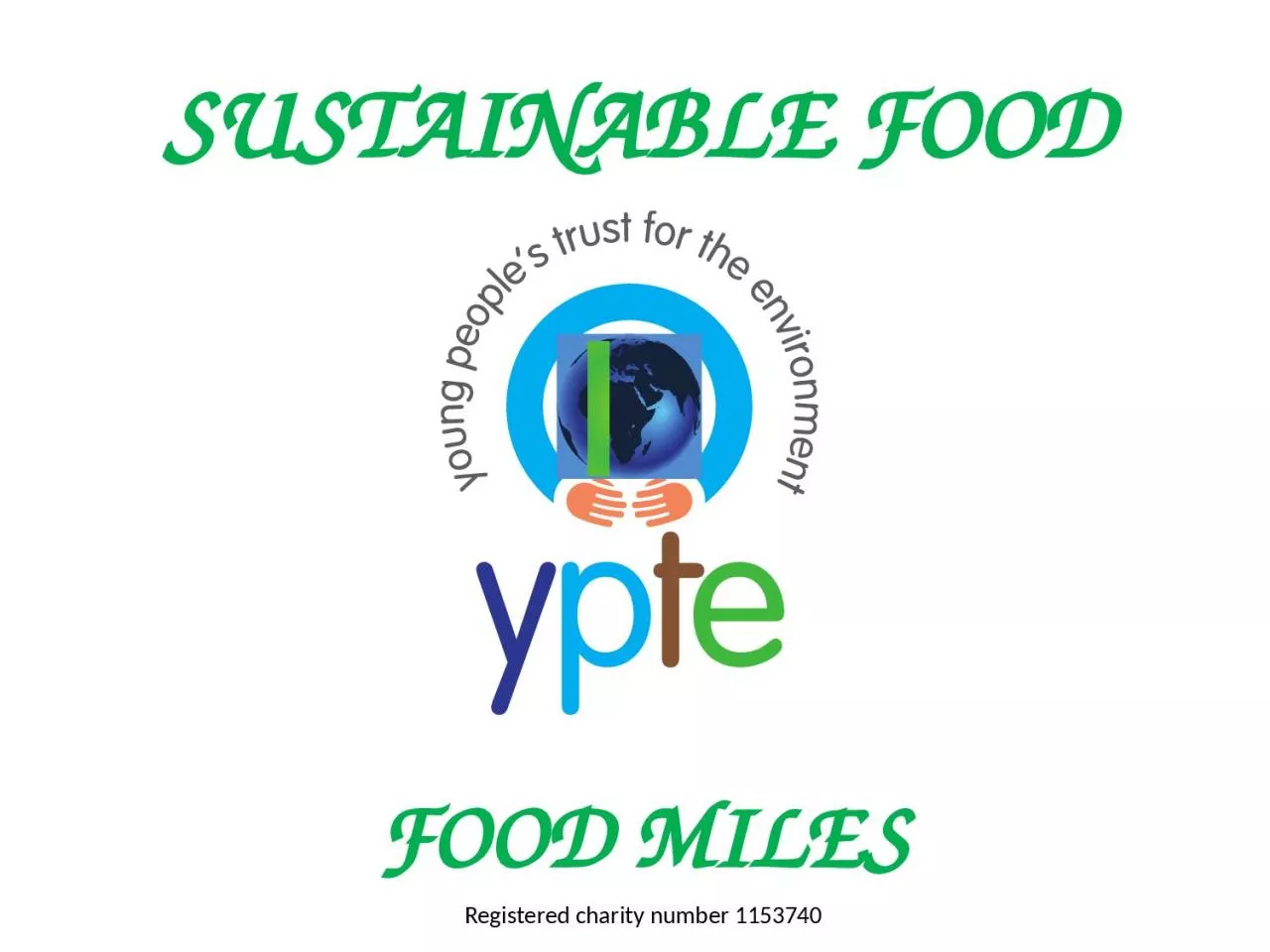

FOOD MILES SUSTAINABLE FOOD WHERE DOES OUR FOOD COME FROM Photo Britney Lindsay From Pasture To Plate Photo eltpics Global Food A study has found that more than half of the UKs food and feed now comes from overseas ID: 933229
Download Presentation The PPT/PDF document "Registered charity number 1153740" is the property of its rightful owner. Permission is granted to download and print the materials on this web site for personal, non-commercial use only, and to display it on your personal computer provided you do not modify the materials and that you retain all copyright notices contained in the materials. By downloading content from our website, you accept the terms of this agreement.
Slide1
Registered charity number 1153740
FOOD MILES
SUSTAINABLE FOOD
Slide2WHERE DOES OUR FOOD COME FROM?
Photo: Britney Lindsay
Slide3From Pasture To Plate
Slide4Photo: eltpics
Global Food
A study has found that more than half of the UK’s food and feed now comes from overseas
(The Guardian 2016)
Slide5Why Does Our Food Need to Travel Miles?
Photo: Jon Brew
Tea pickers returning with sacks of tea, Munnar, India
Slide6Photo: robin_24
Food miles are the distance food travels from where it is grown to where it is ultimately purchased or consumed
Going Bananas Over Food Miles
Slide7Photo: Tim Vo
Bananas are grown in tropical regions, such as Central America, where the average temperature is 27 degrees celsius
The coloured polyethylene bags protect the bananas from wind and from attacks of insects or birds
Slide8Photo: Heather
Each banana plant produces one huge bunch.
The time between planting a banana plant and the harvest of the banana bunch is from 9 to 12 months
Slide9Photo: Roger W
Bunches of bananas are brought to the processing station by a conveyor system or carried carefully by workers. Bunches can weigh over 100 pounds.
Slide10Photo: Ali Eminov
The bananas are washed, inspected and cut into ‘hands' of 6 bananas. Buyers of fruit in the UK want unbruised bananas so very high standards are set
Slide11The bananas are taken to the local port by truck where they are inspected again
Photo: Steven Depolo
Slide12Bananas that pass the test are packed in refrigerated ships (to prevent ripening)
Photo: Joseph
It takes between 6 and 12 days to get from Central America to the UK
Slide13When the bananas arrive at their destination port they are first sent to ripening rooms and then to our shops
Photo: Nik Stanbridge
Slide14Photo: Dave Crosby
Produced Locally, Sourced Globally
Salt from China
Calcium sulphate (a nutritional additive) from India
Palm oil from Southeast Asia
Whey from New Zealand
Milk and wheat from the EU
Sugar from the Caribbean
Cocoa from South America
Slide15Photo: Port of San Diego
IMPACTS OF TRANSPORTING FOOD
Slide16Impacts of Transportation
Slide17Food’s Carbon Footprint
The greenhouse gas emissions produced by growing, rearing, farming, processing, transporting, storing, cooking and disposing of the food we eat.
Photo: Ron Mader
Slide18Photo: Roberto Rizzato
Click here for greenhouse effect video
The greater the distance food has travelled, the greater the impact on the environment
Slide19Photo: Britney Lindsay
Only a small percentage of food is transported by air but it produces approx. 20% of the world’s food transport carbon emissions
Slide20Photo: Roel Hemkes
Rail and sea transport produce approx. 10% each of the world’s food transport emissions
Photo: John Turner
Slide21Photo: highwaysengland
Road transport produces 60% of the world’s food transport carbon emissions
Slide22Pollutants, such as the chemicals in traffic fumes, can quickly trigger asthma symptoms
Stuart B
Health Implications
Slide23REDUCING FOOD MILES
Photo: Phil Mclver
Slide24Photo: Seacoast Eat Local
Buying local foods reduces food miles
Slide25Photo: Betuli
There are now lots of farm shops and farmer’s markets that sell locally grown food
Slide26Photo: Niklas Morberg
BUT buying local is not always best
….
Buying British apples in June might not be any better than buying apples from New Zealand 12,000 miles away
Slide27Photo: Edo Dijkgraaf
Imported tomatoes can have much lower carbon footprints than those grown locally out of season
Slide28Photo: Nick Saltmarsh
Buy
British
and
seasonal
foods to reduce food miles
Slide29Photo: Adam Raoof
Grow Your Own